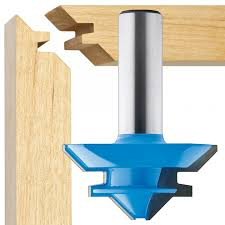We have a project involving the construction of roughly 100 small boxes with a slotted lid and hinged bottom. These will be used as a wall mounted, lockable, collection box. The client does not want end grain showing and our sample was made from solids with the top and sides edge mitered and glued. The top was then slotted after the fabrication. One thought to speed the process up would be to miterfold on CNC, but then the work to band/hide plywood in the slot and the bottom edge would be time consuming. So assuming we go with the original plan of solids mitered, is there much concern in joint failure if we do not spline, pin, or V nail? The material thickness will be 1/2" and the rough dimensions of each box are 10" x 8" x 8". Material will be made from White Oak and some boxes walnut. Am thinking a v-nail at each bottom corner may help add some support.
From contributor Ge
Your concern is justified somewhat, as not all joints are as strong as possible. Plus you do not know what rough handling the boxes may receive. How about using epoxy fillets on the inside, or even triangular cross section wood fillets. If you double the joint area, you double the strength.
From contributor sc
For some similar sized product display assemblies I used the hot PUR cartridges. Worked fantastic. Hold the miter in place for a few seconds and you can handle. I did one miter side of a number of units and then came back and did the other side to let it set up before putting pressure on them. You can pin later if you want. Test out some glued miters and even butt joints with this stuff and you may want to pass up the pins and avoid the hole for this type project.
I used PUR from CP in the link. I have the Rockler thing for home funsies. CP has a variety of adhesives formulas depending on application. It's not cheap but for this it may be a solution & then you'll find all sorts of things to use it with. For this type of glue up it will take a bump where regular glues would "pop" apart.
(This is NOT "hot melt" glue sticks; in case you didn't know)
From contributor Ge
PUR hot melt provides some strength when the adhesive cools, like a regular stick hot melt. But then as time goes on, the adhesive reacts with moisture in the wood and air to form an even stronger bond. The temperature for the hot melt gun is hotter than glue stick guns.
From contributor B.
You might look into lock-miter tooling. Very fast and adds significant strength to the joint.
BH Davis
From contributor Da
I agree with the post about using the locking miter. I use that corner joint with titebond III glue and it passes the drop test from a table top.
From contributor ma
I also agree. CP has a variety of adhesives formulas depending on application. It's not cheap but for this it may be a solution & then you'll find all sorts of things to use it with.